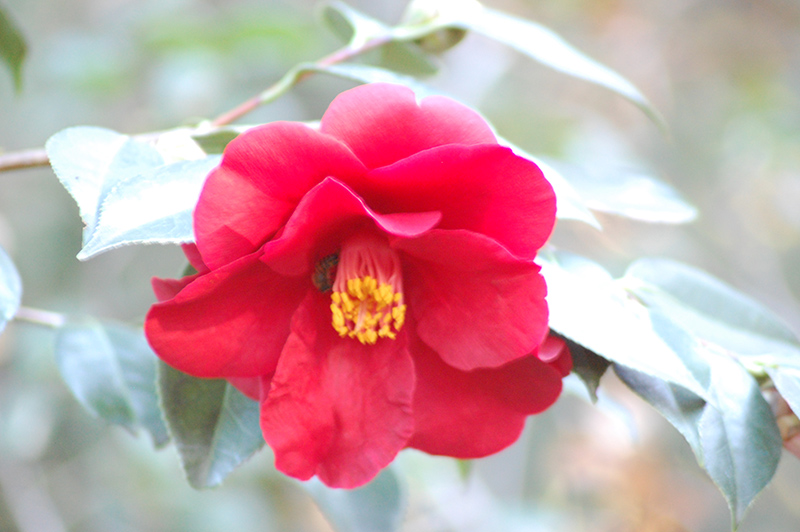Camellia, Ice Angels Spring's Promise Camellia japonica 'Spring's Promise' Height: 7 feet Spread: 7 feet
Sunlight:
Hardiness Zone: 6a Other Names: Japanese Camellia, Common Camellia Group/Class: Ice Angels Series Brand: Monrovia Description: Stunning bright red single blooms cover this upright shrub in late winter to early spring; lustrous, oval, evergreen leaves persist all year; provide rich, acidic, moist, well-drained soil; a hardy selection for colder climate areas Ornamental Features Camellia, Ice Angels Spring's Promise features showy red round flowers with gold eyes at the ends of the branches from late winter to early spring. It has dark green evergreen foliage. The glossy pointy leaves remain dark green throughout the winter. Landscape Attributes Camellia, Ice Angels Spring's Promise is a multi-stemmed evergreen shrub with an upright spreading habit of growth. Its average texture blends into the landscape, but can be balanced by one or two finer or coarser trees or shrubs for an effective composition. This is a relatively low maintenance shrub, and should only be pruned after flowering to avoid removing any of the current season's flowers. It has no significant negative characteristics. Camellia, Ice Angels Spring's Promise is recommended for the following landscape applications; Planting & Growing Camellia, Ice Angels Spring's Promise will grow to be about 7 feet tall at maturity, with a spread of 7 feet. It has a low canopy with a typical clearance of 2 feet from the ground, and is suitable for planting under power lines. It grows at a medium rate, and under ideal conditions can be expected to live for 40 years or more. This shrub does best in partial shade to shade. It requires an evenly moist well-drained soil for optimal growth, but will die in standing water. This plant should be periodically fertilized throughout the active growing season with a specially-formulated acidic fertilizer. It is particular about its soil conditions, with a strong preference for rich, acidic soils. It is somewhat tolerant of urban pollution, and will benefit from being planted in a relatively sheltered location. Consider applying a thick mulch around the root zone in both summer and winter to conserve soil moisture and protect it in exposed locations or colder microclimates. This is a selected variety of a species not originally from North America.![]()
![]()
![]()
![]()
![]()
![]()
![]()
![]()
![]()
![]()
![]()
![]()

